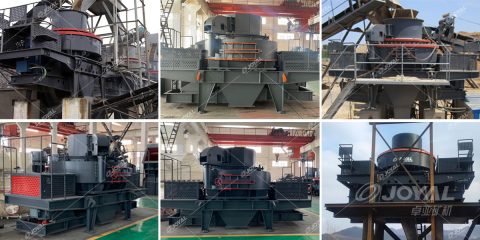

Natural river sand is a non-renewable resource and is increasingly in short supply. As the country has stricter and stricter environmental protection requirements, restrictions on river sand mining in various places have become more stringent. Therefore, the use of machine-made sand instead of natural river sand has become an irreversible trend in the concrete industry. Machine-made sand is made by mechanical crushing and sieving after soil removal treatment. Rocks, mine tailings or industrial waste particles with a particle size of less than 4.75mm, but excluding soft and weathered particles. The research on machine-made sand mainly focuses on the influence of machine-made sand gradation, stone powder content, parent rock characteristics, grain shape, MB value and other indicators on concrete performance and mechanism research, research on the design of machine-made sand concrete mix, and machine-made sand concrete durability the study. However, the application of machine-made sand and the performance of machine-made sand concrete largely depend on the different production processes of machine-made sand. The crushing methods of sand making machines mainly include jaw, cone, VSI, counter-roll and impact, etc. The order of the advantages and disadvantages of the particle shape of the machine-made sand produced is: the VSI type is better, the impact type and the cone type are the next, and the jaw type and the pair-roll type are the worst. At present, there are few comparative studies on the effect of production technology on the performance of machine-made sand concrete, which is not conducive to the popularization and application of advanced machine-made sand production technology in engineering. The machine-made sand produced by two production processes of ordinary sand production and dry sand production was used to prepare concrete with two strength levels of C30 and C55, and the influence of machine-made sand of different production processes on the working performance, mechanical properties and durability of concrete was compared and studied.
Conclusion:
(1) The MB value of dry sand-making machine-made sand is lower than that of ordinary craft-made sand, and the dry-made sand-making machine has a better sand grain shape, so that the workability of concrete with two strength grades of C30 and C55 prepared by dry-made sand-making machine-made sand is better than that of ordinary craftsmanship. Sand, in the case of little difference in workability, dry sand making machine-made sand can save the amount of water-reducing agent.
(2) Because dry sand-making machine-made sand has fewer weak parts, dry-made sand-making concrete has better workability, and dry-method sand-making machine-made sand concrete aggregate slurry interface transition zone is less, and dry sand-making process produces machine-made sand. Concrete has higher compressive strength, splitting tensile strength and compressive elastic modulus than ordinary craft-made sand concrete.
(3) The impact of machine-made sand from different production processes on the electric flux of concrete is similar; the anti-carbonization performance of concrete prepared with dry-made sand-made sand is better than that of ordinary craft-made sand concrete at all ages.

Note: In the text, C30 and C35 represent concrete signs, C30 represents concrete with cubic compressive strength of 30Mpa, and C35 represents concrete with cubic compressive strength of 35Mpa.